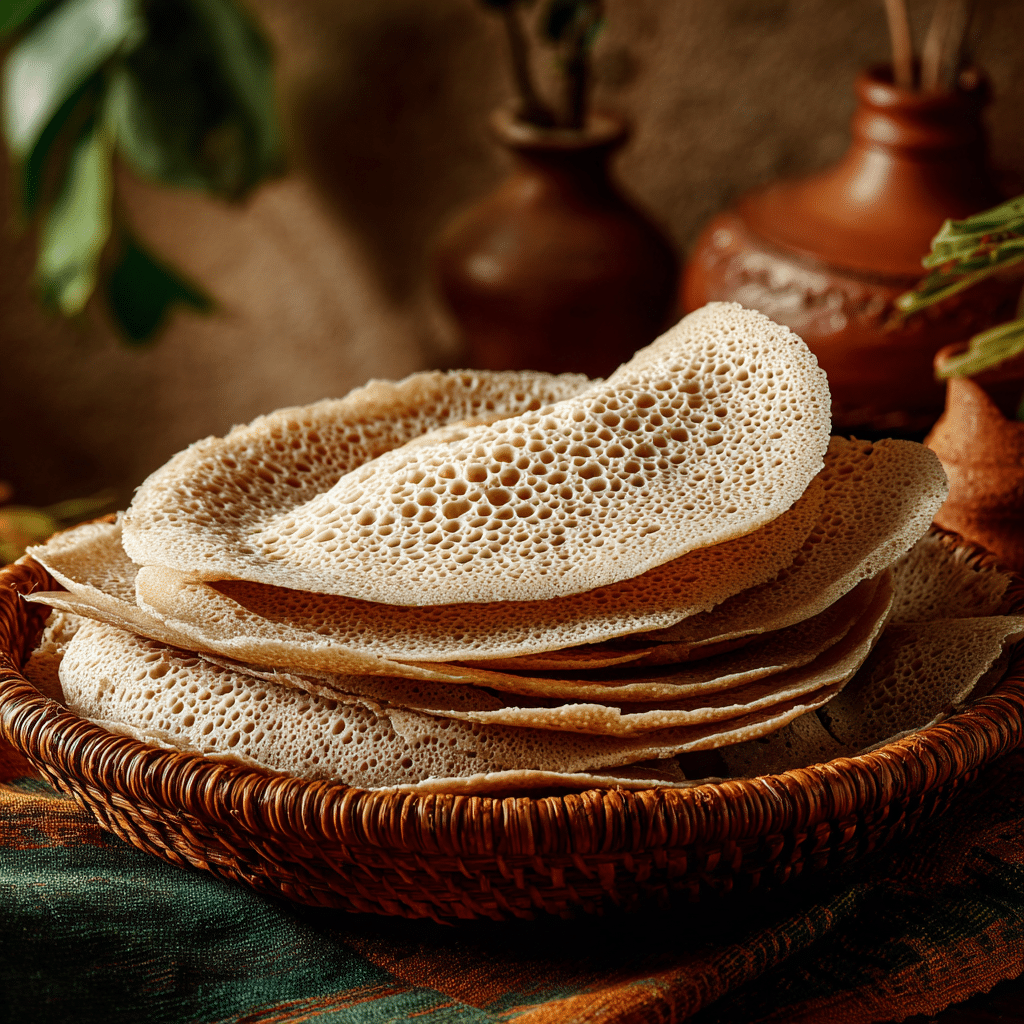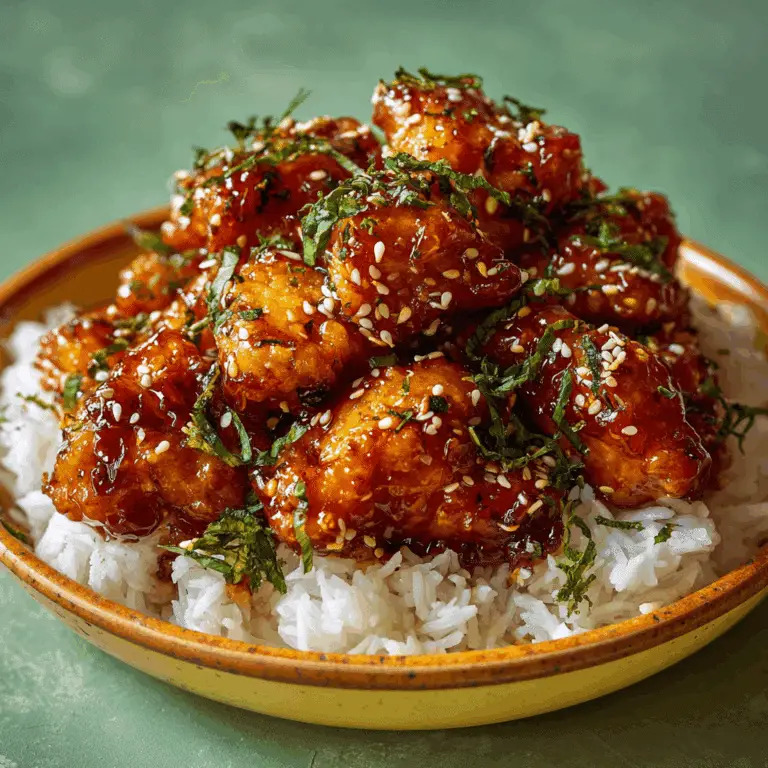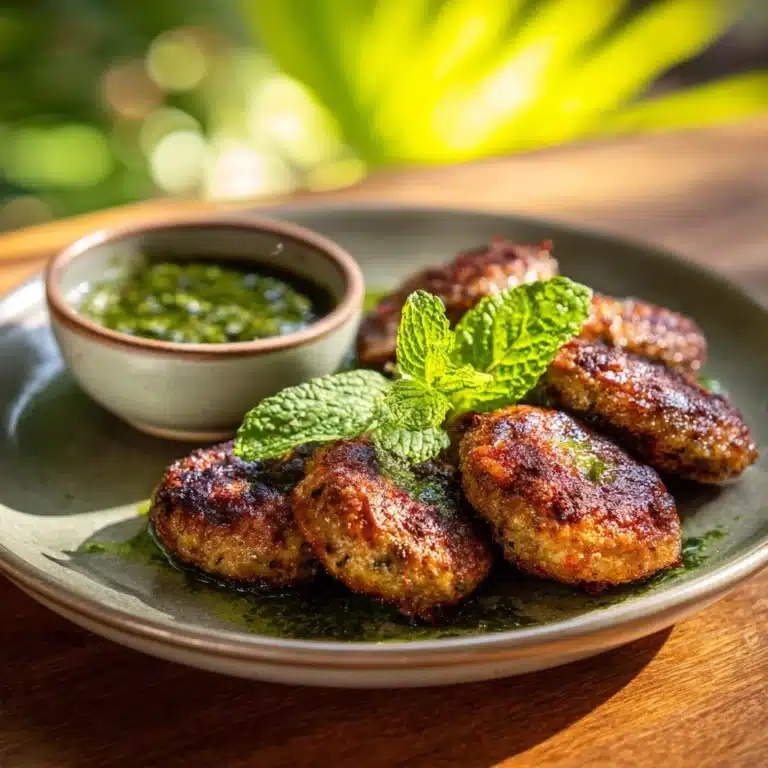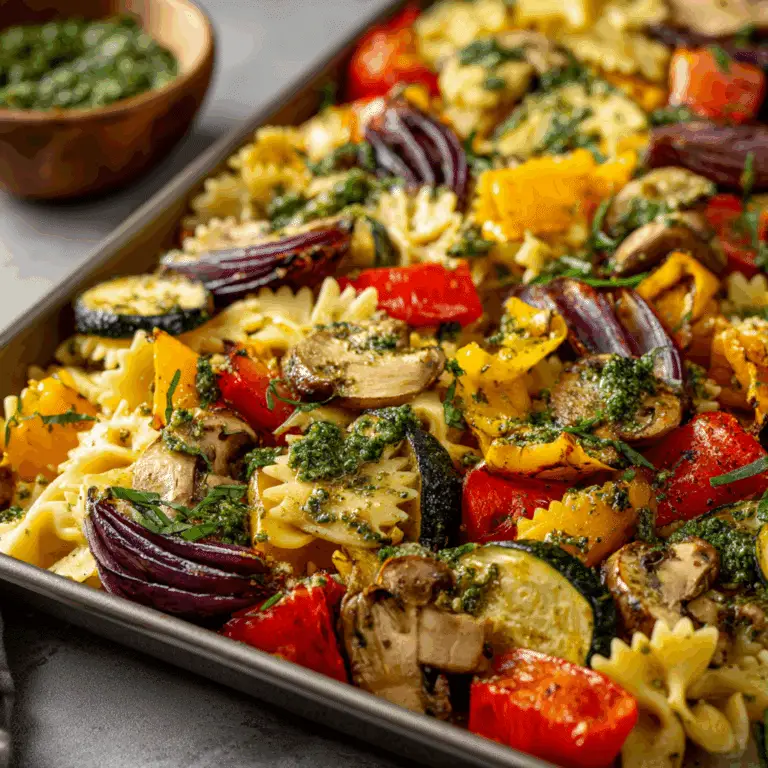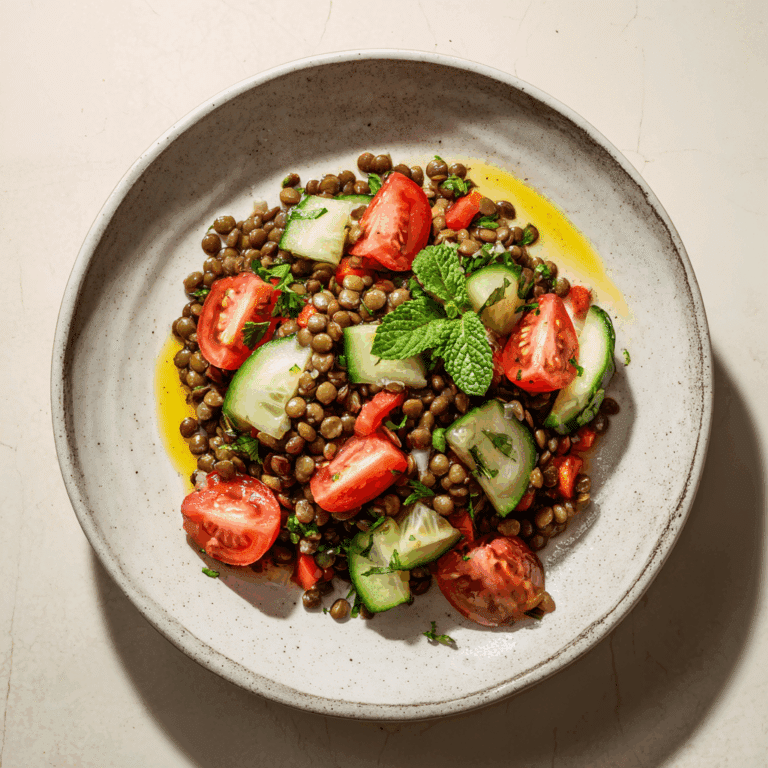Injera (Ethiopia) Recipe
Injera (Ethiopia) is a delightful and distinctive flatbread that brings a burst of culture to your kitchen. This spongy, slightly tangy bread made from teff flour serves as both a plate and utensil for many Ethiopian dishes, allowing you to scoop up rich stews and vibrant sides with ease. Mastering Injera (Ethiopia) in your home not only connects you with a rich culinary tradition but also offers a unique texture and flavor profile that elevates any meal.
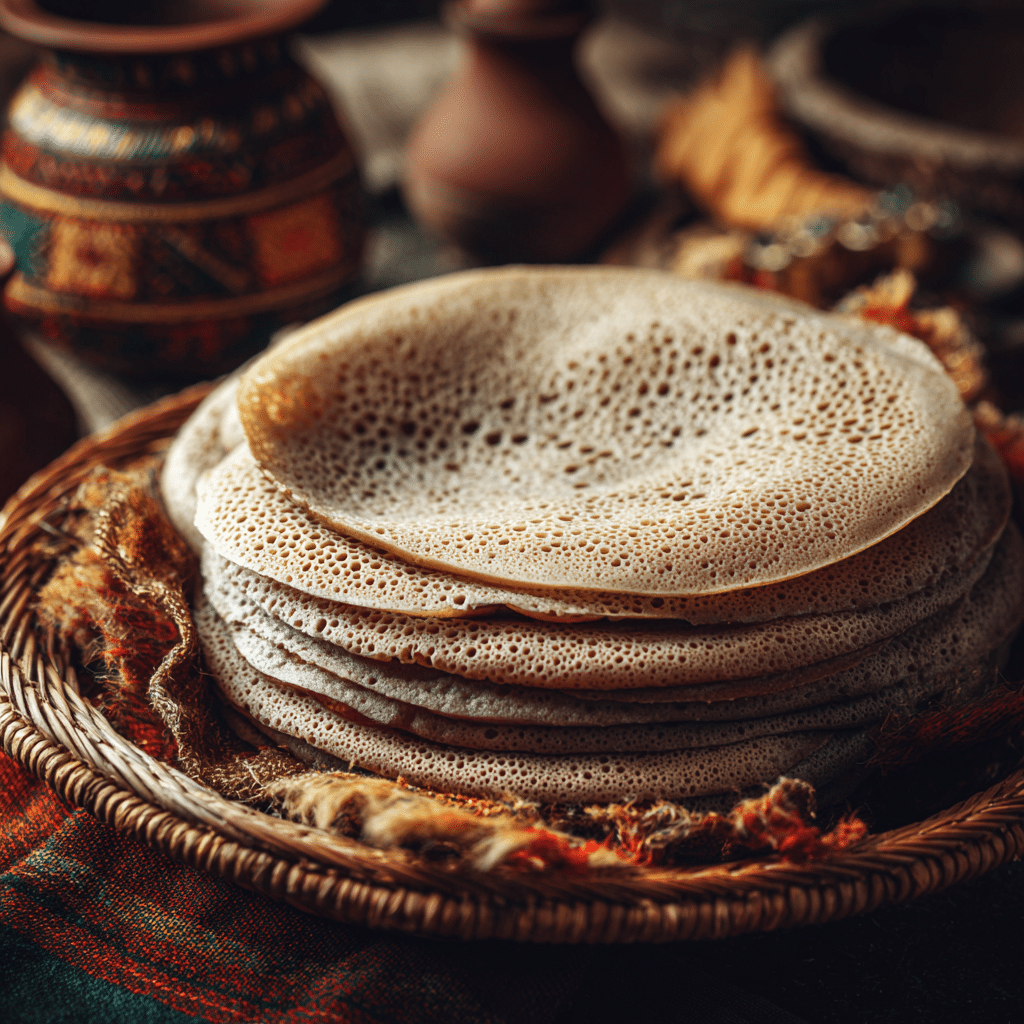
Ingredients You’ll Need
Creating authentic Injera (Ethiopia) is wonderfully simple, relying on just a few essential ingredients that come together to form its signature texture and taste. Each ingredient contributes to its unique tanginess, softness, and spongy quality.
- 1 cup teff flour: The star ingredient, teff flour brings a slightly nutty flavor and gives Injera its classic light brown color and spongy texture.
- 1 ½ cups water: This hydrates the flour to form a batter that’s perfect for fermentation and cooking.
- Pinch of salt: Enhances the natural flavors and balances the sourness developed during fermentation.
How to Make Injera (Ethiopia)
Step 1: Prepare the Batter
Begin by mixing the teff flour, water, and a pinch of salt in a bowl until you get a smooth, thin batter. This mix resembles a crepe batter and sets the stage for the famous Injera tangy flavor through fermentation.
Step 2: Ferment the Batter
Cover the bowl loosely and let the batter sit at room temperature for about 24 hours. This fermentation process is what gives Injera (Ethiopia) its characteristic sour flavor and airy structure, so don’t rush it. You’ll notice little bubbles appearing on the surface as it ferments, signaling it’s ready.
Step 3: Cook the Injera
Heat a non-stick skillet or a traditional mitad (a large flat clay griddle) over medium-high heat. Pour a thin layer of batter in a circular motion, covering the cooking surface evenly. As it cooks, bubbles will form on the surface, and once the edges lift slightly, your Injera is ready. There’s no need to flip it; cooking just one side results in that familiar spongy texture with a soft top layer.
Step 4: Cool and Serve
Remove the Injera gently with a spatula and let it cool on a clean cloth or plate. Keeping it covered with a towel maintains its softness until you’re ready to serve.
How to Serve Injera (Ethiopia)
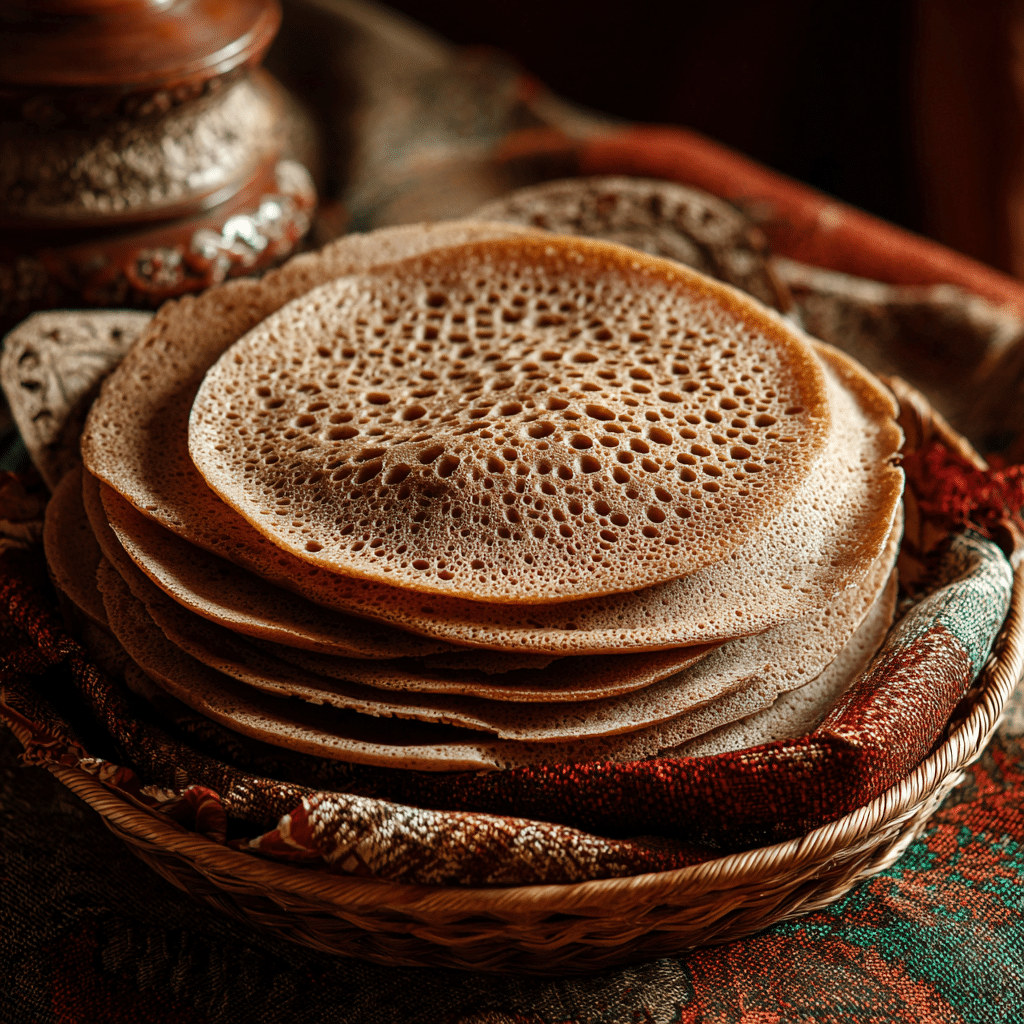
Garnishes
Traditionally, Injera (Ethiopia) is garnished simply with a scattering of fresh herbs or a drizzle of spiced clarified butter known as niter kibbeh, which adds a fragrant richness to the bread.
Side Dishes
The magic of Injera truly shines when paired with Ethiopian stews such as doro wat (spicy chicken stew), misir wat (lentil stew), or vegetable combinations like atkilt wat. These hearty dishes are scooped up directly with the bread, enhancing every bite.
Creative Ways to Present
For a modern twist, use Injera as a wrap for grilled meats and fresh salads, or create a layered platter where different stews and sides are beautifully displayed atop large sheets of Injera for sharing and communal dining.
Make Ahead and Storage
Storing Leftovers
Leftover Injera (Ethiopia) stays fresh when wrapped tightly in plastic wrap or stored in an airtight container at room temperature for up to two days. Keep it covered to prevent drying out and maintain its soft texture.
Freezing
You can freeze Injera by stacking them with parchment paper between each piece, wrapping them securely in foil, and placing them in a freezer bag. When frozen, Injera can last up to a month and provide you with convenient quick meals.
Reheating
To reheat, simply wrap Injera in a damp paper towel and microwave for about 20 seconds, or warm briefly in a skillet over low heat to revive its softness and pliability without drying it out.
FAQs
What is teff flour?
Teff flour is a tiny, nutrient-rich grain native to Ethiopia and Eritrea, prized for its slightly nutty flavor and high protein and fiber content, making it perfect for making Injera’s unique texture.
Can I substitute teff flour?
While teff is traditional, you can use a mix of whole wheat and all-purpose flour in a pinch, though it won’t have quite the same authentic taste or texture as Injera (Ethiopia) made with pure teff.
How long should the batter ferment?
Fermentation usually takes about 24 hours at room temperature, allowing natural yeasts to develop that signature slight sourness and airy bubbles essential for perfect Injera.
Why don’t I flip the Injera when cooking?
Injera is traditionally cooked on one side only, which allows it to develop a spongy surface filled with tiny air pockets and a soft, smooth top layer; flipping would ruin this unique texture.
Can I make Injera without fermentation?
Making Injera without fermentation is possible but not recommended, as you’ll miss the vital tangy flavor and texture that define Injera (Ethiopia). The wait is well worth it!
Final Thoughts
There is something truly special about making your own Injera (Ethiopia) and experiencing its soft, tangy layers firsthand. Not only is it a wonderfully interactive way to enjoy Ethiopian cuisine, but it also invites sharing and connection around the table. Give it a try—you might just find this delicious flatbread becoming a beloved staple in your kitchen too.

